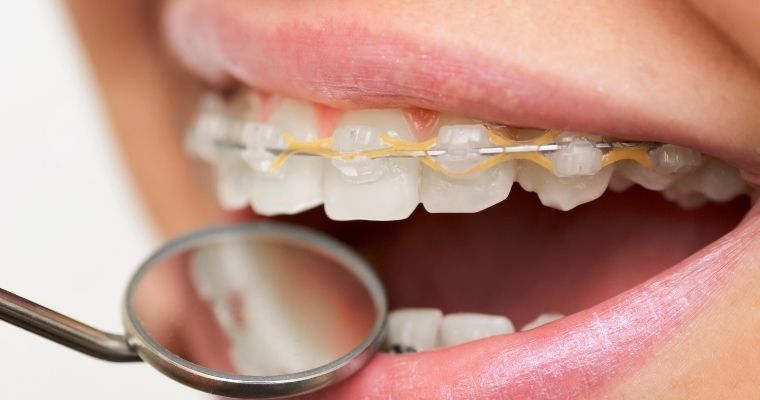It’s the big day – getting your braces off! But what a disappointment when your braces are removed and you discover white spots surrounding areas on your teeth where the braces were placed.
What do white spots on teeth mean?
Unsightly white spot lesions on teeth are areas of decalcification created by poor brushing while in treatment.
What causes white spots with braces?
Unfortunately, orthodontic appliances create areas for plaque to accumulate with all the irregular surfaces of brackets, bands, and wires. Plaque is a soft, sticky film of bacteria over the teeth.
With time, the bacteria secrete an acidic waste product that demineralizes the tooth. The enamel’s key components, calcium and phosphate, get stripped away, giving the affected area a chalky, dull, white appearance compared to unaffected areas.
The enamel underneath the brace is protected, and as a result, when the braces come off, the color difference between the damaged and undamaged areas is obvious.
White spot lesions are essentially the first visible sign of tooth decay forming.
Do white spots on teeth go away?
Studies show that white spots can form in a little as one month! Once it’s created, it’s near impossible to reverse and may require additional, costly procedures by your dentist to mask it.
However, a full-blown cavity can be prevented if the plaque is removed, and then the tooth is allowed to remineralize through the use of topical fluoride or prescribed dental products containing calcium and phosphate ions.
White spot lesions caused by poor oral hygiene should not be confused with white spots classified as “fluorosis.”
What is fluorosis?
Fluorosis white spots are caused by genetic and environmental factors as the tooth is developing. This form of hypomineralization will have been present on the tooth from the first day it came in.
Your dentist or orthodontist in Chatham, NJ can tell you if your white spot is fluorosis vs. white spot lesion or decalcification.
How to prevent white spot lesions with braces
Bottom line:
If no plaque is present or it’s removed in a timely fashion, no white spot lesion will form.
Tip 1. Brush thoroughly
More often, white spot lesions form near the tooth’s gum line, which is an area people often miss when brushing. For this reason, orthodontic patients should pay attention to gently brushing the area between the orthodontic wire and the gum.
Tip 2. Floss daily
Next, white spot lesions often form between the teeth, which is why dentists recommend flossing daily. With braces, this can be particularly challenging. Floss threaders and floss harps, such as the Platypus, make it easier. I recommend all patients in braces use a Waterpik to help flush beneath the wire and around the gum line.
Tip 3. Use fluoride
Daily topical fluoride rinses and limiting the sugars in your diet also help. I give my patients a toothpaste called Plaque HD… This text opens a new tab to the PlaqueHD website…, which colors the plaque, so patients see where they need to brush better.
Tip 4. Visit your dentist regularly
All orthodontic patients should see their dentist regularly and have topical fluoride or varnishes applied. I recommend patients see their dentist every three months rather than six months if they want to be proactive and prevent bigger problems.
If you’re high risk, you should definitely see your dentist every three months. Your dentist or orthodontist may prescribe a more highly concentrated fluoride toothpaste or rinse. They may prescribe an antimicrobial with Chlorhexidine (Peridex) or a special toothpaste (MI Paste) that releases calcium and phosphate ions to help with demineralization.
Have questions?
Ask our orthodontist, Dr. Barbara Fodero!
She’s an expert on all things dentistry and orthodontics.
Or contact us by:
- Phone: {{office1-phone}}
- Email: {{office1-email}}
Chatham Orthodontics is proud to serve patients of Chatham, NJ and surrounding areas, including Madison, Florham Park, Summit, New Providence, Berkeley Heights, Livingston, Short Hills, Millburn, Maplewood, and Morristown.







